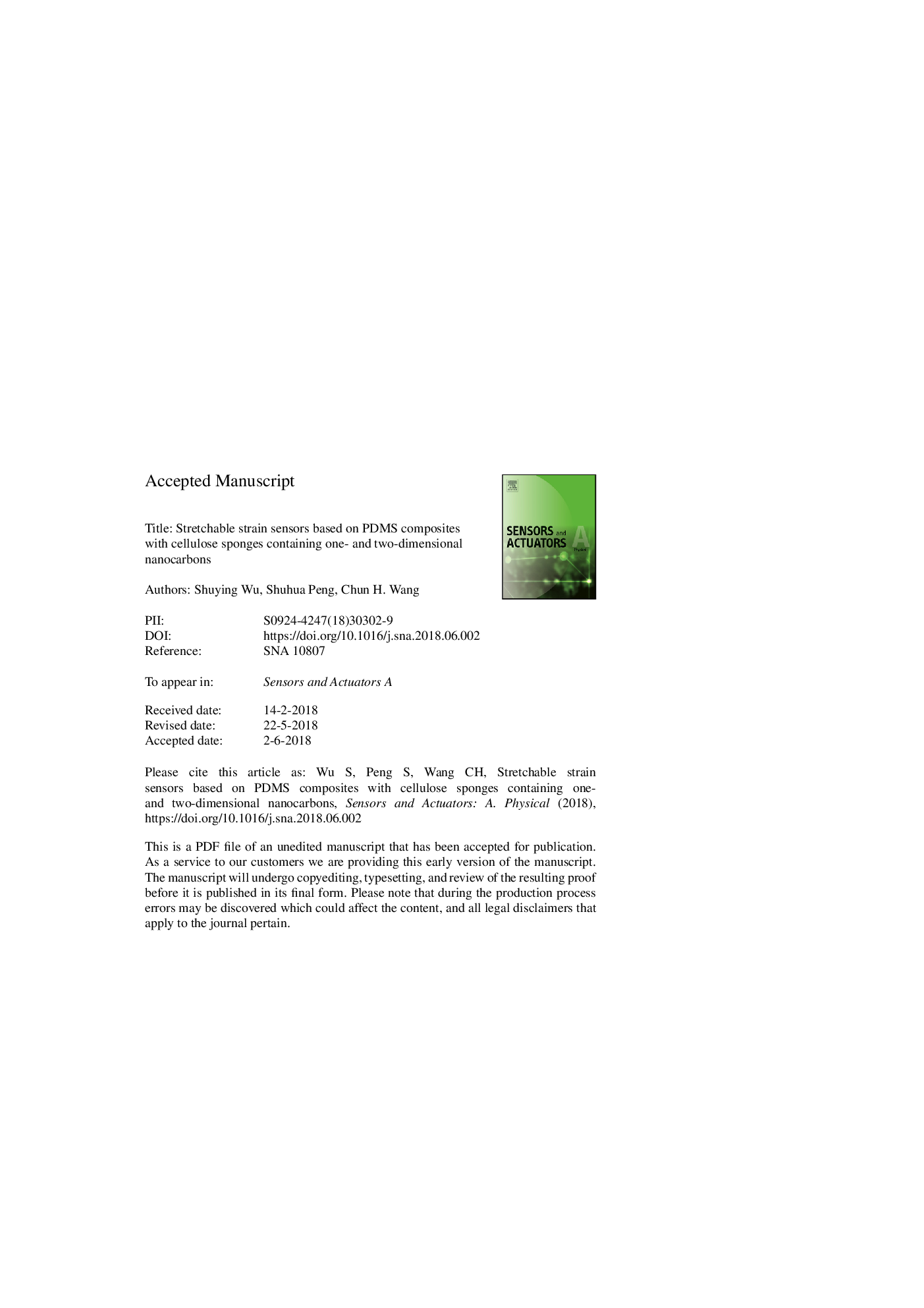| کد مقاله | کد نشریه | سال انتشار | مقاله انگلیسی | نسخه تمام متن |
|---|---|---|---|---|
| 7133171 | 1461821 | 2018 | 27 صفحه PDF | دانلود رایگان |
عنوان انگلیسی مقاله ISI
Stretchable strain sensors based on PDMS composites with cellulose sponges containing one- and two-dimensional nanocarbons
دانلود مقاله + سفارش ترجمه
دانلود مقاله ISI انگلیسی
رایگان برای ایرانیان
کلمات کلیدی
موضوعات مرتبط
مهندسی و علوم پایه
شیمی
الکتروشیمی
پیش نمایش صفحه اول مقاله

چکیده انگلیسی
Here we present a new technique to create stretchable strain sensors by using porous cellulose composites with a low content of nanocarbon materials. In this method, highly porous cellulous microfibre sponges containing nanocarbon materials are first created by a freeze-drying method. The resullting cellulose sponges are highly conductive due to the spatial confinement of the reduced graphene oxide (rGO) or its hybrid with carbon nanofibers (CNFs) in the fibrous skeleton. Infiltrating this highly porous sponge with polydimethylsiloxane (PDMS) then creates a stretchable composite containing hierarchical conductive network with a very low loading of nanocarbons (â¼0.1â¯wt% in the resultant PDMS composites). Experimental results reveal that the hybridisation of rGO with a small amount of CNFs increases the electrical conductivity and piezoresistive sensitivity of the composite sensor. Moreover, upon increasing the CNFs content (rGO:CNFs mass ratio varies from 1:0 to 1:1), the electrical conductivity increases up to 9.2â¯Ãâ¯10â3 S/m, the modulus increases while strength and elongation at break decrease, and the gauge factor increases initially from approximately 3.4 to 9.4 (at rGO:CNFsâ¯=â¯1:0.1) then decreases thereafter. When subjected to cyclic loading-unloading up to 10 000 cycles, the new composite sensors show excellent durability with very little drift over a large number of cycles. The piezoresistive response exhibits negligible strain-rate dependence up to 0.2â¯sâ1. Finally, an example is presented to highlight the potentials of the composite sensor as wearables in monitoring the movement of human joints, e.g., the bending of a finger joint.
ناشر
Database: Elsevier - ScienceDirect (ساینس دایرکت)
Journal: Sensors and Actuators A: Physical - Volume 279, 15 August 2018, Pages 90-100
Journal: Sensors and Actuators A: Physical - Volume 279, 15 August 2018, Pages 90-100
نویسندگان
Shuying Wu, Shuhua Peng, Chun H. Wang,